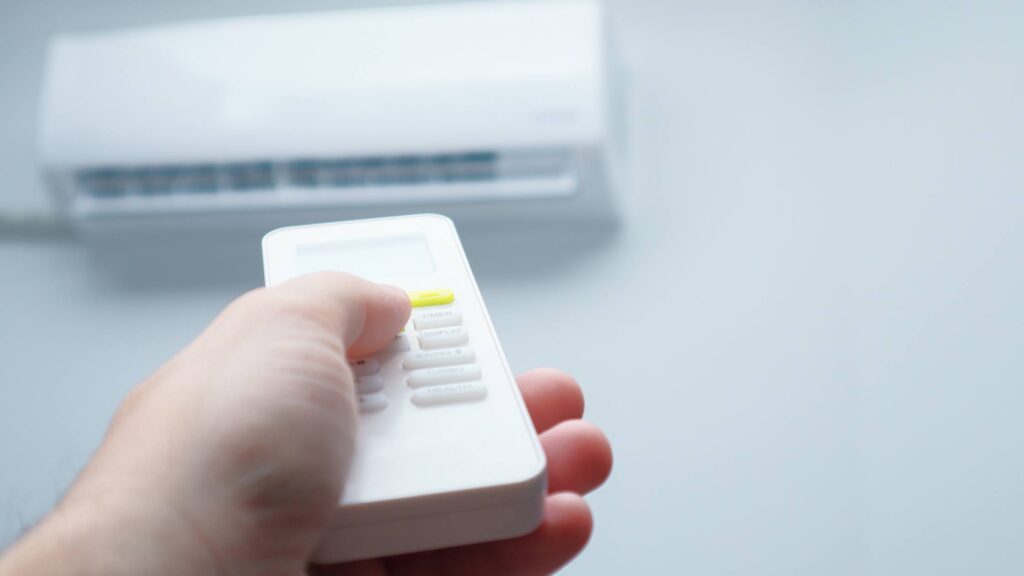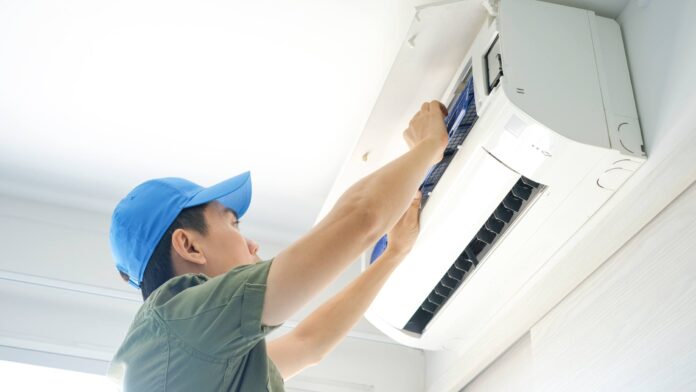Table of Contents
As temperatures soar, the air conditioner becomes an indispensable ally in keeping your home comfortable. However, like any other appliance, AC units require regular maintenance to function efficiently. Air conditioner cleaning is not just about dusting off the exterior but involves a thorough cleaning of the outdoor unit, which plays a crucial role in the system’s overall performance. This guide delves into the essentials of air conditioner cleaning, offering you expert tips and tricks to keep your AC running smoothly.
The Importance of Regular Air Conditioner Cleaning
Frequent air conditioner cleaning can significantly impact its efficiency and lifespan. Over time, the outdoor unit accumulates dust, pollen, and debris, which can obstruct airflow and hinder the system’s ability to cool your home effectively. By committing to a yearly deep clean, preferably in the spring before peak usage, you ensure your air conditioner operates at its best when you need it most.
What You Need for Air Conditioner Cleaning
Before diving into air conditioner cleaning, it’s essential to gather the right tools and materials for a safe and effective clean:
- Screwdriver
- Protective gloves
- Shop vacuum with a soft brush attachment
- Garden hose
- Foaming AC condenser coil cleaner
Step-by-Step Air Conditioner Cleaning Guide
1. Power Off the Unit
Safety first: turn off your air conditioner at the thermostat and disconnect the power to the outdoor condenser unit either by unplugging it or switching off the power at the circuit breaker.
2. Clear the Surroundings
Ensure the area around the outdoor unit is free from leaves, branches, and other debris. Trim any plants or bushes to maintain at least a foot of clearance around the unit, preventing blockages and ensuring optimal airflow.
3. Open the Condenser Unit
Consult the manufacturer’s manual to correctly remove the top of your air conditioner, gaining access to the interior coils. This step is crucial for a thorough air conditioner cleaning.
4. Debris Removal
Wear gloves to manually remove any large debris inside the unit. Subsequently, use a shop vacuum to clear out finer dust and dirt, ensuring you’re not pushing the debris further into the unit.
5. Clean the Coils
Dust and dirt accumulation on the coils can significantly reduce efficiency. Gently brush the coils using a soft bristle brush or a vacuum brush attachment, moving vertically along the coils to dislodge any buildup without damaging them.
6. Apply Coil Cleaner
Spray the coils with a foaming AC condenser coil cleaner, thoroughly covering them. Let the cleaner sit and work its magic for the recommended duration, typically 5-10 minutes, to break down stubborn grime.
7. Rinse the Unit
Use a garden hose to gently rinse the cleaner off the coils and the unit. Avoid using a power washer or spraying too forcefully to prevent damage to the AC’s components.
8. Reassemble and Dry
Once the unit is clean and rinsed, reattach the top of the condenser unit. Allow the unit to air dry completely before restoring power.

Maintaining Your Air Conditioner Post-Cleaning
- Regularly remove any new debris around the unit to prevent buildup.
- Consider hosing down the unit periodically between deep cleans.
- Keep up with changing your indoor air filters every two to three months.
- Ensure landscaping is kept at a distance from your AC unit.
- Use a breathable cover to protect your AC in the offseason.
When to Call a Professional
While DIY air conditioner cleaning can maintain your unit’s efficiency, there are times when a professional should step in. Annual inspections by a qualified HVAC technician can catch issues before they become major problems. Additionally, if you notice signs like frost build-up on the unit or a decline in cooling efficiency, it’s time to call in the experts.
By adopting a proactive approach to air conditioner cleaning, you not only enhance your home’s comfort but also contribute to the longevity and efficiency of your AC unit. Remember, a little maintenance goes a long way in ensuring your air conditioner serves you well through the hot summer months.
Q: How often should I clean my air conditioner?
To ensure optimal performance and efficiency, it’s recommended to give your air conditioner a thorough cleaning once a year, ideally during the spring before the hotter months set in. This helps prepare the unit for its peak usage time. Additionally, it’s wise to check and clear any debris around the outdoor unit seasonally, especially after storms or during fall when leaves and twigs are more likely to accumulate.
Q: Can I perform air conditioner cleaning by myself?
Yes, most homeowners can perform basic air conditioner cleaning tasks such as removing debris around the unit, cleaning or replacing air filters, and even carefully cleaning the condenser coils with the right materials. However, for deep cleaning or if you encounter any issues that require disassembling parts of the unit, it might be safer and more efficient to call a professional.
Q: What tools and materials do I need for DIY air conditioner cleaning?
For basic cleaning, you’ll need a screwdriver (to open the unit), protective gloves, a shop vacuum with a soft brush attachment for removing debris inside the unit, a garden hose for rinsing, and a commercial foaming AC condenser coil cleaner to clean the coils effectively.
Q: How can I safely clean the inside of my outdoor AC unit?
Begin by turning off the power to ensure safety. Remove the top cover using a screwdriver, then manually remove any large debris. Use a shop vacuum with a soft brush attachment to remove smaller particles. When cleaning the coils, use a gentle, up-and-down motion to avoid bending them, and choose a foaming coil cleaner designed for air conditioners to break down the dirt effectively.
Q: Is it necessary to use a coil cleaner, or can I just rinse the coils with water?
While rinsing the coils with water can remove surface dust and debris, a foaming coil cleaner is designed to penetrate deeper, dissolving stubborn grime and buildup that water alone might not remove. For a thorough clean, it’s advisable to use a coil cleaner, following the product’s instructions carefully.
Q: What should I do if my air conditioner is not working efficiently after cleaning?
If you notice that your air conditioner’s efficiency hasn’t improved after cleaning, it might be time to call a professional. Issues like refrigerant leaks, electrical problems, or worn-out components can affect performance and require professional diagnosis and repair.
Q: Can cleaning my air conditioner reduce my energy bills?
Yes, regular air conditioner cleaning can contribute to better efficiency, which in turn can lead to lower energy consumption and costs. A clean unit operates more smoothly, reducing the strain on the system and thus using less energy to cool your home effectively.



